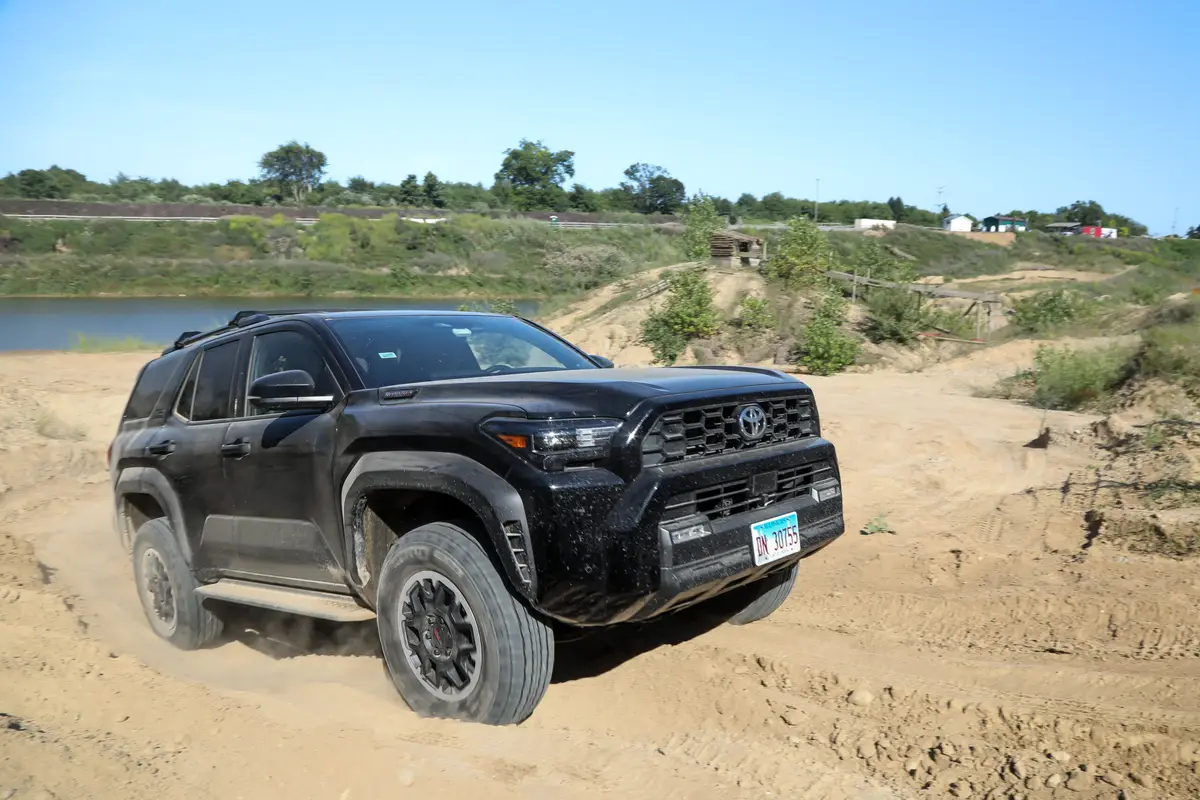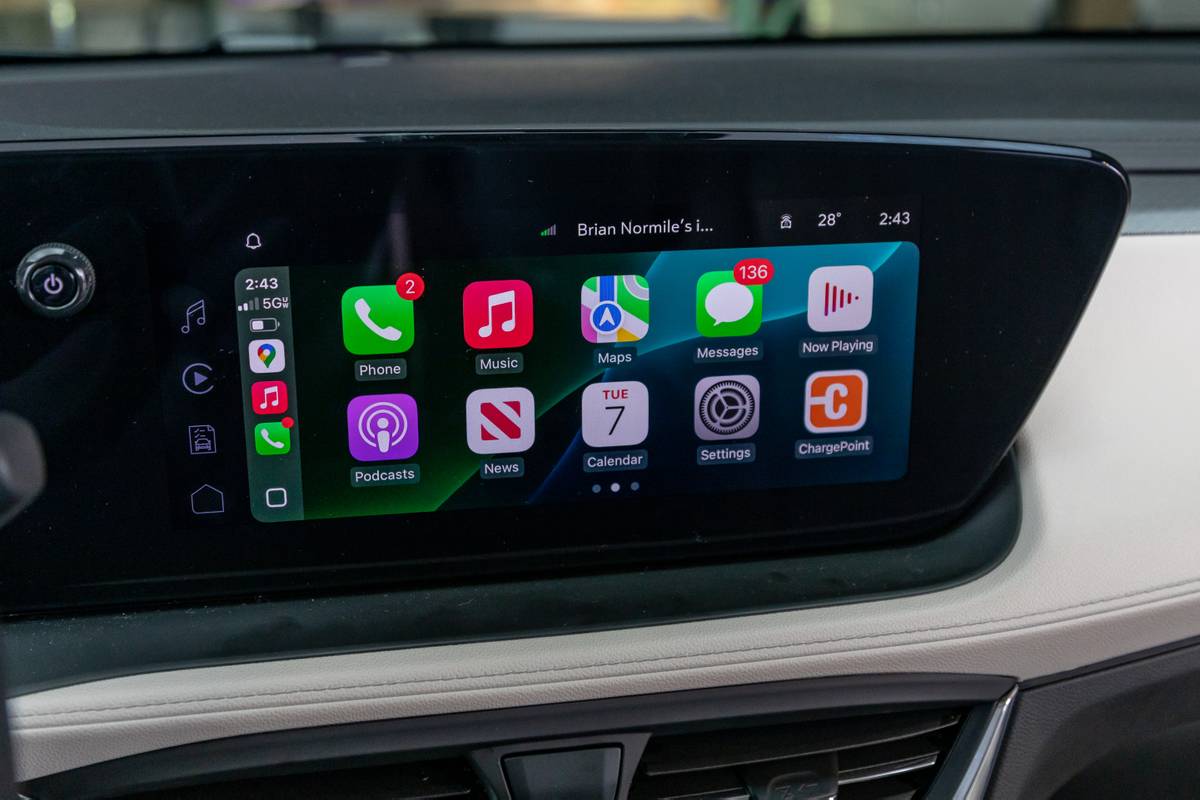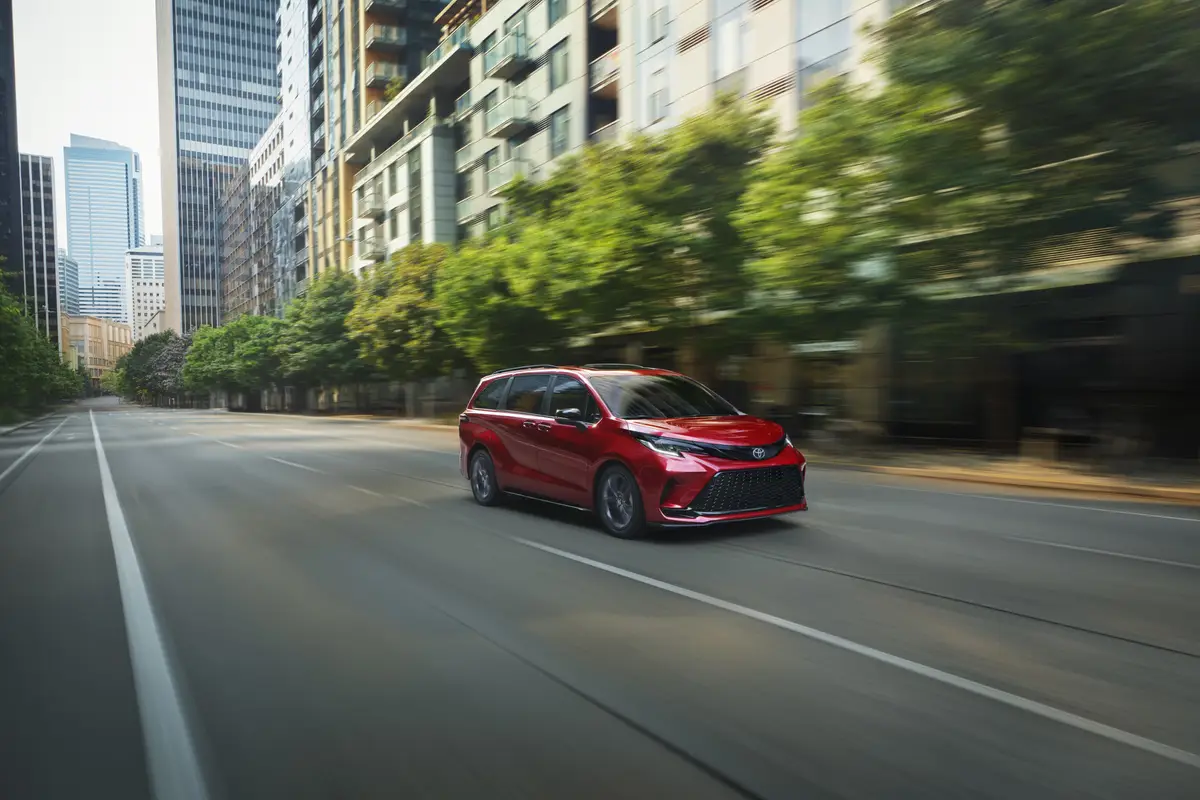Our view: 2004 Toyota Tundra
It’s a tough world out there, especially when you’re talking trucks. If the Chevrolet Silverados aren’t taking shots at you, the Dodge Rams, Ford F-150s and GMC Sierras of the world are lining up to knock you down.
How does Toyota answer the challenge? How does it respond to the big boys with the biggest toys? With enough gusto and machismo to be a legitimate thorn in their sides.
Along with the new Nissan Titan, the Toyota Tundra is the only import-branded vehicle beating down the full-size truck door. Listen closely and you can hear it knocking. Actually you can hear it roaring.
Toyota is ready to make its first jump into NASCAR Craftsman Truck Series Competition in February 2004. And just to get everyone ready, the automaker has something big cooking.
New for this year, Toyota has introduced the much-anticipated 2004 Tundra Double Cab to its full-size pickup truck line, a vehicle that is the longest, widest, deepest and roomiest full-size, four-door, half-ton pickup Toyota has ever built.
Does that make it good enough to knock off the best? It’s not there yet (at least in terms of inch count). But a simple warning: It comes dangerously close.
Built in Princeton, north of Evansville, and available in dealerships next month, the introduction of the Double Cab joins the two-door Regular Cab, a shorter bed with an extended cab with two rear-hinged (or “suicide”) doors for easier rear passenger entry, and the four-door Access Cab. Three model grades are offered – base, midlevel SR5 and the top-of-the-line Limited. The base trim is available only on two-wheel-drive regular cabs.
In any version it’s good looking. From the street, all Tundras again arrive with the restyled front fascia from ’03 as well as standard anti-lock brakes and a center console that could easily fit in with the Toyota Sequoia sport utility vehicle.
With 20 models to choose from and a base price expected to stay around $17,000 (pricing has yet to be finalized), the Tundra weighs in with plenty of options and a reasonable sticker that will satisfy the average consumer and the commercial user.
But Toyota says the Double Cab arrives like nothing you’ve ever seen before. We’ll give it credit, but not completely.
At 230 inches, or better than 19 feet, its chassis is longer than previous Tundra models, and it even outstretches the Ford F-150 Super Crew. But inch for inch, the Silverado and Sierra are longer (246.6 in four-door Extended Cab models). Toyota also says its wheelbase is longer than the Ford Super Crew, but it comes up 17 inches shorter than GM’s competition.
Towing capacity is decent – capable of pulling up to 7,100 pounds when equipped – but that’s 1,500 pounds less than Chevy or GMC and 2,200 less than the F-150.
We’ll give it one edge: Inside it stands alone. People love the interior of their trucks, and the Double Cab does not compromise on bed len gth or bed depth to offer greater rear passenger room than previous models. With 3 more inches of height and more than 4 inches of width, from every angle the Double Cab reeks of a big, brawny and big-rig machine.
It’s here that Toyota paid special attention. At 37.5 inches, rear legroom is more than that of the current Chevy, Dodge or Ford models, and the rear seatback angle (24 degrees) is three degrees better than the competition, allowing more passenger comfort and making the Tundra seat much more than an occasional passenger space.
In addition to its comfort and roominess, the Tundra Double Cab offers the segment’s first vertical power-sliding full-rear window, more than four times larger than the open area of the manual sliding rear window in the Regular and Access Cab models. A power sliding moonroof is optional.
As an added plus, rear-seat passengers get their own heating and air-conditioning ducts, and there is the option of a rear-seat audio and DVD system with wireless headphones. The split folding seats offer an extra measure of cargo utility for carrying things you don’t want to put in the cargo bed.
Under the hood, it’s the same Toyota dependability. Two dual-overhead-cam engines are available – a 3.4-liter V-6 that comes with a five-speed manual transmission and an optional four-speed automatic and a 4.7-liter V-8 that comes with a standard automatic. Either engine is available with four-wheel drive. Equipped with the V-8, the Tundra has enough brawn and a light enough curb weight to make acceleration off the line equal to or better than the competition.
In short, it provides more of everything buyers are looking for in a rapidly growing segment of the truck market. Inch for inch, cubic foot for cubic foot, it makes no concessions to the competition in terms of size, utility or passenger room – especially in Double Cab form.
“It will meet the growing demand among pickup owners for, simply, more of everything,” said Don Esmond, Toyota Division senior vice president and general manager.
All in all, Toyota has added some great competition in the truck segment. It’s a true winner in a class loaded with heavyweights, a truck that suits a general contractor as well as the average consumer.
Not a Dodge. Not a Ford. Not a Chevy. But a hard dose of reality for all of the above.
2004 Toyota Tundra
Rating: 3
High gear: Already an attractive ride, the new Tundra is roomy and significantly larger than the current model. The Tundra weighs into the truck market with a longer and deeper bed and the segment’s first vertical power-sliding full-rear window.
Low gear: Even in Double Cab form, the Tundra is not as long as Chevy’s products and does not have the towing power of the big boys.
Vehicle type: Rear- or all-wheel-drive, front-engine, two- or four-door, four-passenger full-size pickup.
Key competition: Ford F-150, Chevrolet Silverado, GMC Sierra, Dodge Ram
Base engine (V-6): 190 horsepower, DOHC 24-valve 3.4-liter
Torque (V-6): 220 lbs-ft. @ 3,600 rpm
Standard safety equipment: Front disc brakes and rear drums with anti-lock brakes; dual front air bags; front seat pre-tensioners.
Wheelbase (V-6): 128.3 inches
Length (V-6): 218.3 inches
MPG rating (4×2, 5-speed, V-6): 16 city/20 highway
Manufactured: Princeton
Warranty: Basic warranty is three years/36,000 miles; drivetrain is five years/60,000 miles; and rust is five years/unlimited miles.
Base price (estimated): $17,000
Latest news



